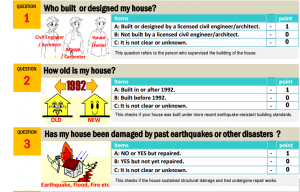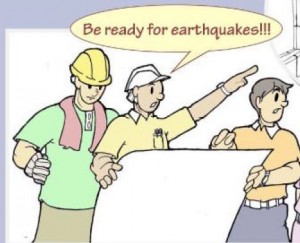MAY 25 (Eagle News) — Have you ever wondered if your house can withstand a strong earthquake?
Or does it need further “earthquake-proofing” to make your house stronger and less vulnerable in case of a big quake?
The recent devastation caused by the magnitude 7.8 earthquake in Nepal stressed the importance of making sure that your house is sturdy and strong enough to withstand a strong tremor.
It is better to be prepared after all to make sure that you and your family will be safe and will know what to do in case of a strong earthquake.
Recently, the Philippine Institute of Volcanology and Seismology released the Valley Fault System Atlas, a handbook of large scale maps showing in detail areas traversed by the Valley Fault System or VFS.

Phivolcs said that the VFS is an active fault system in the Greater Metro Manila Area (GMMA) with two fault traces: the 10 km long East Valley Fault in Rizal and the 100 km long West Valley Fault runs through different cities and towns of Bulacan, Rizal, Metro Manila, Cavite and Laguna. The West Valley Fault can generate a large earthquake which poses threat to people’s lives, buildings and infrastructures, and livelihood.
Director Renato U. Solidum Jr. of PHIVOLCS said that the location of active faults is a major basis for people’s preparedness for earthquakes, appropriate land use, contingency planning for disaster response, and design of houses, buildings and infrastructures. Future development needs to consider these faults so people won’t be at risk.
With the atlas that can be viewed through the Phivolcs website, people would readily know if their house is built on or near the fault line, and do the appropriate action needed for contingency planning.
Phivolcs also released a “house self-check test” entitled “How Safe is Your House?” It can be viewed through the Phivolcs website
(http://satreps.phivolcs.dost.gov.ph/images/jica_materials/2_questionaire_chb_english_ver1_0_january20_2014.pdf)
This “House self-check” can help an ordinary layman to understand and evaluate the integrity of his house and its vulnerability to strong earthquakes.
According to Phivolcs, the initial result will verify whether a house was properly built and have followed appropriate construction procedures and recommended measures or if it will require necessary strengthening.

The evaluation was initially intended for 1 to 2-storey Concrete Hollow Block (CHB) houses, including those residences with small shops, offices, garages and the like. It will help the house owners of this type to evaluate their houses by themselves and to understand the likely behavior of their houses during a strong earthquake.
Phivolcs still recommend that the house owner should consult a building expert or civil engineer on the structural stability of his house.
We are posting here the Phivolcs “house self-check” form in our infographics section: How safe is your house?
So there’s no harm in trying to answer these 12 simple questions prepared by Phivolcs so you would be more aware if your house needs further strengthening in case of a strong quake. (Eagle News Service)








